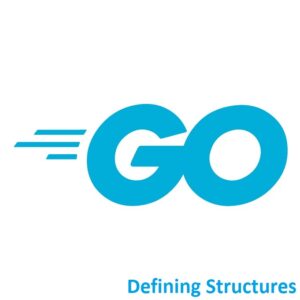
Understanding Structs in Go
Welcome to the world of Golang! Structures, or structs, are fundamental data types in Go that enable you to define custom complex data structures by grouping together variables of different types. Mastering structs is key to creating organized, reusable, and efficient data models in Go. This comprehensive guide navigates through the syntax, functionality, and best practices for defining and utilizing structs in your Go programs.
Defining Structs
In Go, you define structures using the struct keyword. A struct is a composite data type that groups together variables of different types under a single name.
Here’s the basic syntax for defining a struct in Go:
package main
import "fmt"
// Define a struct named 'Person' with fields 'FirstName' and 'LastName'
type Person struct {
FirstName string
LastName string
}
func main() {
// Create an instance of the 'Person' struct
person1 := Person{
FirstName: "John",
LastName: "Doe",
}
// Access fields of the struct
fmt.Println("First Name:", person1.FirstName)
fmt.Println("Last Name:", person1.LastName)
}
In the above example, we define a Person struct with two fields: FirstName and LastName. We then create an instance of the Person struct named person1 and set values for its fields. Finally, we access and print the values of the fields using dot notation.
Embedded Structs
You can also embed one struct within another to create more complex data structures.
Here’s an example of embedding a struct:
package main
import "fmt"
// Define a struct named 'Address'
type Address struct {
Street string
City string
ZipCode string
}
// Define a struct named 'Person' that embeds the 'Address' struct
type Person struct {
FirstName string
LastName string
Address Address
}
func main() {
// Create an instance of the 'Person' struct
person1 := Person{
FirstName: "John",
LastName: "Doe",
Address: Address{
Street: "123 Main St",
City: "Anytown",
ZipCode: "12345",
},
}
// Access fields of the embedded 'Address' struct
fmt.Println("First Name:", person1.FirstName)
fmt.Println("Last Name:", person1.LastName)
fmt.Println("Street:", person1.Address.Street)
fmt.Println("City:", person1.Address.City)
fmt.Println("Zip Code:", person1.Address.ZipCode)
}
In this example, the Person struct embeds the Address struct, allowing you to access the fields of the embedded struct using dot notation as well.
Conclusion
Structs serve as the backbone for defining complex data structures in Go, offering flexibility, reusability, and maintainability in your code. With a solid understanding of struct design, organization, and usage, you can leverage this powerful feature to build robust and scalable applications in Go.
That’s All Folks!
You can find all of our Golang guides here: A Comprehensive Guide to Golang




